10 Ways Of Preserving Food To Save Money
In this article, we look at the 10 different ways of preserving food to help reduce waste and save money. We are seeing food preservation make a real comeback with everyone spending more time at home.
I remember my Grandma’s pantry stocked with homemade goodies like jams, pickles, and cured bacon. In fact, her cupboards were full of interesting jars and packets. Furthermore, nothing ever seemed to be thrown away or wasted. She always found another use for things, especially food.
My grandparents had a terrific vegetable garden, free-range chickens, and their faithful dog Rex. Produce from the garden was always used fresh, and any excess was processed using whatever home-preserving equipment Gran had.
Leftovers from the table went to Rex and the chickens, and all other foodstuffs were composted. In Grandma’s day, there was no such thing as food wastage!
Quick Content Navigation
Why Find Ways Of Preserving Food At Home?
Home food preservation began because it was essential for survival, but that is definitely not the case today!
We rely heavily on chemicals and artificial additives to preserve food for our convenience. However, knowing the negative effects chemical preservatives have on our health, we are looking at ways to live cleaner.
Wanting to live cleaner has inspired many of us to re-learn the old ways of food preservation. And, with modern home-preserving equipment, these processes are either fully or partly automated. Means, there is no excuse to try different ways of preserving food at home.
If you are just starting, and learning the techniques of home food preservation, it can seem a little daunting. After all, there are so many ways of preserving food that even choosing the best technique for a particular food group can make your head hurt.
Therefore, we have come up with a detailed guide to show you all the different ways of preserving food at home.
What is Food Preservation?
Food preservation is used to slow down or stop processes that cause food to spoil. This will happen if food is exposed to bacteria or other micro-organisms, especially in high humidity.
Subsequently, the way that food preservation works is to alter these processes or avoid them altogether.
Preserving should retain the foods flavor, texture and nutritional value and prevent any food-borne or air-borne contamination.
These Ways Of Preserving Food Will:
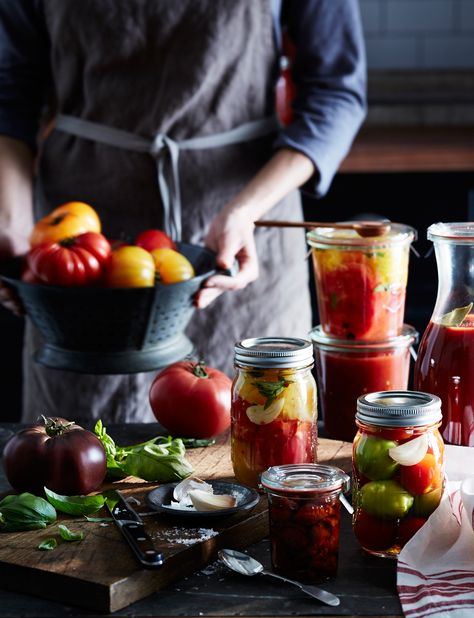
1. Increase self-sufficiency:
Preserving any excess harvest from your gardens can keep you mainly self-sufficient. Not only will growing your own food be healthier for your family, children learn where their food comes from.
If you don’t have a lot of space, team up with neighbours to create a common garden. Or, use local organic markets for fresh produce and to help your local community.
Growing your own fruit and vegetables is cost effective, fun and provides nutritious fruits and vegetables.
Using food preservation techniques and the best home preserving equipment also stops food waste.
2. Enjoy chemical-free food:
When you practice home food preservation you are aware of exactly what is going into the final product.
This means you can avoid consuming harmful chemical additives and preservatives. In fact, try to get the whole family involved in not only growing, but preserving food at home.
Get the kids to research different organic fertilizers and chemical-free pesticides.
Enjoy safe, healthy and nutritious seasonal varieties of your favorite produce all year round.
3. Reduce your environmental footprint:
Store-bought food and non-degradable plastic packaging go hand in hand. As you become more self-sufficient you will certainly be using less of these.
With less trips to the supermarket you save money by not buying un-necessary items and also on packaging. Think of all the landfill space you will be saving.
In short, if you’re looking to live more sustainably, then home food preservation is a great way to do it.
4. Support your local community:
You will be supporting local businesses and nearby farmers by buying their seasonal produce. Shopping local not only helps the community, you build relationships and know exactly where your food has come from.
To summarize the above, you can lead a healthier more self-sufficient lifestyle if you invest time to preserve your own food.
How Does Food Preservation Work?
Food spoils due to a combination of factors. These include:
- Growth and activity of microorganisms like bacteria, yeast, funghi and mold.
- Chemical reactions causing oxidation of fats making food become rancid.
- Weather conditions of temperature, moisture and light which may increase microbial growth.
Therefore, preservation techniques increase the shelf-life of food by either preventing, altering or slowing down any of these factors.
Here Are 10 Different Ways Of Preserving Food
You now understand the importance of preserving your own food at home. What is also true, is that there are many pieces of modern home preserving equipment that can make these processes super simple.
Let’s explore the many different ways of preserving food to see which will best suit your needs. Have some fun with your family using new food preservation techniques.
1. Home Canning For Food Preservation
Introduced in the 1800’s by the French cook Nicholas Appert, the canning method preserves food through a combination of
- Packing: Food is packed into special canning jars.
- Heating: Jars are heated to a high temperature to destroy microorganisms and render enzymes inactive. Air within the jar is pushed out.
- Sealing: As the jar cools a vacuum is formed inside, sealing the jar and preserving its contents.
Using this way of preserving food your products will usually have a shelf-life of at least a year.
There are two different types of canning methods and which one you use will depend on the type of food you are preserving.
Water Bath Canning
In this method food is processed at low temperatures for a long time. It is ideal for preserving high acidic foods (with a pH of 4.5 or lower.) These include most fruits, pickled vegetables, salsas, jams and jellies.
Do not use this technique to preserve meat, poultry, fish or low acidic vegetables.
To preserve using the water bath canning method you will need:
- A large stockpot.
- A canning rack which is placed inside the pot to keep the jars from touching the bottom.
- Mason jars and seals.
- Canning tools including a ladle, jar lifter, tongs and a funnel.
For easier food preservation use a water bath canner which has a built-in canning rack.
Pressure Canning
Pressure canning is suited for preserving low acidic foods. These include root vegetables, winter squash, legumes, meat, poultry and seafood.
A specialized canner is required and preserves food at high temperature (240 degree Fahrenheit) and pressure.
When using a pressure canner for food preservation, make sure you follow all instructions carefully. If this method is not carried our properly there can be a risk of botulism poisoning.
Tips for Canning Food At Home
- Use fresh produce and avoid any that are bruised or overripe.
- When filling jars leave a little space between the food and the rim as it helps with sealing.
- As you remove the jars from the canner check for a popping sound indicating that the jar is properly sealed
- Once jars have cooled check the seal by pressing the center of the lid. If it pops up and down the jar has not properly sealed and will need to be re-processed.
2. Dehydrators Are Easy Ways Of Preserving Food
The dehydrating method of food preservation is easiest using a special home food dehydrator. This process uses a steady airflow and low heat to draw out water from the produce.
With no water left it creates an unfavorable environment for microbial growth.
Drying food is one of the simplest ways of preserving food and there is no risk of developing food poisoning. You can dehydrate fruits and vegetables, spices, meat and fish.
Using a Dehydrator
- Solar dehydrators – a mini tabletop greenhouse powered by solar energy.
- Electric dehydrators – use fans and heating elements to efficiently dehydrate food. Some have temperature gauges and adjustment dials to speed up or slow down drying time depending on the type of produce.
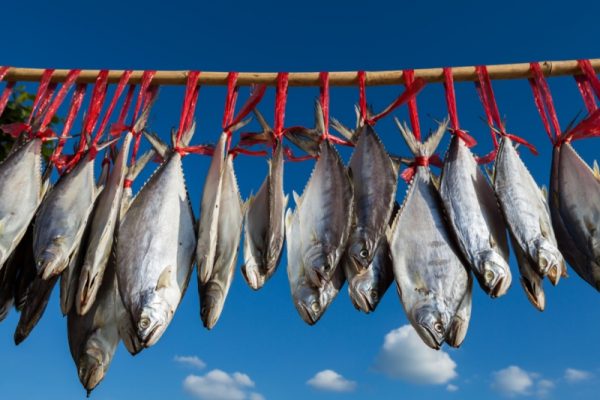
Sun Drying
Food is sliced and placed on racks, mesh screens or strung on lines then put out in the sun to dry.
This technique can be used anywhere with a temperature of above 86 degrees Fahrenheit and under 60% humidity.
Remember to put a cover on to deter flies and other insects.
Hang Drying or Air Drying
Done in the shade to protect delicate items.
This is best for drying herbs and other vegetables that require protection from the sun.
Oven Drying
Place prepared food on baking sheets and use your own oven to slowly dry it out.
Oven drying requires a temperature of around 140 degrees Fahrenheit so make sure that your oven can go that low. You don’t want to end up cooking your food!
This way of preserving food is not very efficient and prolonged use of the oven can make your house very hot. So remember to open your doors and windows.
Using this method of food preservation you store dried food in airtight containers in a cool, dry place.
Tips for Dehydrating
- Ensure you use the right temperatures. Too low will not dehydrate the food properly and you will see mold after some time. Too high a temperature can cause “case-hardening” when the exterior of food hardens quickly and prevents proper internal drying.
- Ensure that food is at least 95 percent dehydrated before storing.
- Increase efficiency by warming the dehydrator in advance. Slice produce to the same size and thickness and dehydrating items with the same drying temperature and times.
- Avoid dehydrating items with high fat content like dairy, avocados and fatty cuts of meat.
3. Smoking Is An Ancient Method Of Food Preservation
Smoking can be used for cooking, preserving and to enhance the flavor of meat, poultry and seafood.
It preserves food through use of:
- Heat – which lowers the moisture content in food.
- Smoke – which uses formaldehyde and alcohols with preservative properties.
Historically, the smoking process used wood from fruit trees (cherry or peach) and hardwoods (hickory, oak or maple.) Sometimes charcoal was used in smokehouses to prolong shelf life and infuse flavor.
In modern times we have electrical food smokers that have completely automated the process of food smoking. They heat quickly to between 100 – 275 degrees Fahrenheit with insulated walls, a thermostat, timer and automatic shut-off feature.
There are two types of smoking techniques for food preservation.
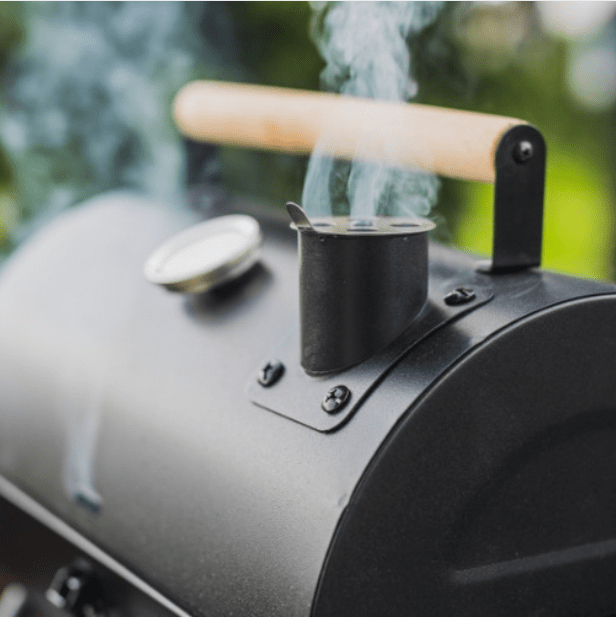
Cold Smoking
Food is first salted, cured or fermented and then exposed to smoke for days or even weeks.
In cold smoking the meat is placed on racks in an enclosed box or chamber. Smoke is generated in a separate chamber and piped to the smoking box so that it is cool.
This ensures that smoke penetrates deep into the food without cooking it. Due care needs to be taken as conditions in the smoking box are often perfect for bacterial growth.
Often used for salami, smoked salmon, sausage, cheese and bacon.
Hot Smoking
Very different from cold smoking with regard to:
- Food placement – placed closer to the fire.
- Temperature – a higher temperature of 126 – 176 degrees Fahrenheit which cooks the food.
- Smoking time -much shorter.
4. Vacuum Sealing Is Quick And Simple
Gaining popularity in the 90’s vacuum sealers are an essential piece of home food preservation equipment. Vacuum sealing is cost effective and you can preserve bulk quantities of perishable produce.
Use these machines to store meat, poultry and cheese for up to 6 months in the fridge or years in the freezer.
Vacuum Sealing
- Preserves food by creating an anaerobic environment to prevent the growth of bacteria and mold.
- Protects food from freezer-burn which occurs due to food being dehydrated by coming into contact with cold air.
Food preserved by vacuum sealers will:
- Have a longer shelf-life. Up to 5 times more than storing in usual plastic bags. 2 – 5 years if frozen food is vacuum sealed. 1 – 2 weeks for fresh produce in the refrigerator as compared to 1-3 days.
- Taste better as all the juices and flavor are locked in by the sealing.
- Keep food safer and fresher as it prevents bacteria from causing food spoilage.
- Prevent oxidation of fats causing meat to go rancid.
- Slow down discoloration and development of bad odors.
5. Curing Is A Complex Way Of Preserving Food
Curing is a rather complex process. Mainly used for meat and fish this method uses either salt, sugar and nitrate or nitrite mixture, or a combination of these.
It may also include smoking to enhance the flavor of the food. When cured in a brine solution it is known as brining, wet-curing or pickling.
Curing allows food to be stored by creating a highly acidic environment.
This creates a chemical reaction called osmosis (water is drawn out from cells) which in turn destroys micro-organisms.
Salting is predominantly used to preserve meats: ham, bacon, salami, jerky and fish as well as herbs and citrus fruits.
Sugar helps to preserve jams and jellies.
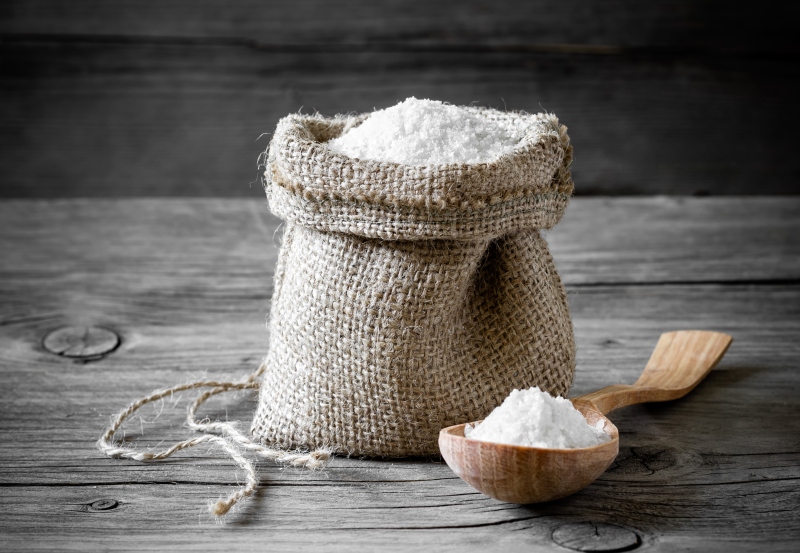
6. Cool/Root Cellaring Preserves Shelf-Life
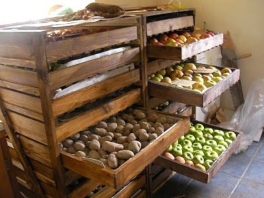
Storing food in cellars has been done since man began growing his own food. Even hunter-gatherers needed cool places to prolong the life of produce they had accummulated.
The simplest way of preserving food requires only a cold, dark space like a root cellar, cold pantry or icebox.
The low temperatures of root cellars preserve shelf-life by slowing down microbial activity.
Items such as root vegetables, cabbages, garlic, onions, apples, and salted or cured raw meat are commonly stored using this method.
7. Freezing Is Food Preservation Used In Every Home
We are all familiar with and use this technique in our homes to keep food longer. By creating low temperatures this method of food preservation helps slow down enzyme and microbial activity.
Prevent freezer-burns and increase shelf-life by vacuum sealing them before storage.
8. Freeze-Drying As A Way Of Preserving Food
Also known as lyophilization or cryodessication. Freeze-drying is a process of dehydrating frozen food under a vacuum. The moisture within the food converts directly into vapor via sublimation.
One of the more interesting ways of preserving food, it can be conducted in:
- Freezers, although it may take several weeks.
- Dry ice.
- Modern freeze-dryer units which are faster acting.
In freeze-drying the food maintains its original shape and size and undergoes very little cell rupturing. Re-hydrated quality is out-standing.
It can be used to preserve fruits and vegetables, meats and coffee.
9. Fermentation Creates Healthy And Tasty Produce
This technique has given us the many “live-culture foods” including yogurt, cheese, sourdough bread, kimchi and sauerkraut.
Let us also not forget it is essential for our much-loved wine, beer and other alcoholic beverages.
Fermentation is a natural chemical process and one of the fun ways of preserving food at home. Microorganisms (bacteria and yeast) convert carbohydrates (sugars and starch) in food to organic acids or alcohol.
Using anaerobic conditions the fermentation process is beneficial as it:
- Prolongs food life by creating lactic acid which acts as a preservative. This chemical is formed as a by-product of fermentation.
- Increases shelf life of low acidic foods by converting them into high acidic foods.
- Changes the texture and flavor of foods making them more nutritious, tasty and easier to digest.
- Is full of healthy probiotics to build good gut bacteria and improve our immunity and health.
10. Infusing For Food Preservation
Infusing has been around since the dark ages and has now become very chic!
An early food preservation method to store fruits and vegetables in alcohol or vinegar the process has had a recent increase in popularity.
Top chefs and bartenders have jumped on board and are creating their own unique infusions.
An infusion is the result of, and the process of, immersing food into a solvent such as water, vinegar, oil, alcohol, honey or glycerine.
After soaking for quite a long period of time the flavor and nutrients of the food transfer into the solution. This also works in reverse with the food taking in some of the solution.
Historically both the food product and the solution were consumed but these days it is more just the solution.
After infusion, the food product is removed and the solution or extract is used for cooking or medicinal purposes.
It must be emphasized that unlike other ways of preserving food, with infusion it is the properties that are being absorbed and preserved in the solvent.
Infusing solutions are commonly:
- Alcohol: Best suited to making extracts and for preserving high acidic fruits. It inhibits microbial growth by drawing out water from the produce. Take care to immerse only a small amount of the fruit in the alcohol.
- Vinegar: A preservative for vegetables and select fruits such as tomatoes in a highly acidic environment.
- Olive oil: A natural preservative creating a seal to slow oxidation of food. It is ideal for preserving vegetables, fish and dry herbs.
Conclusion
Whether you are looking to preserve vegetables, fruits, or meat or considering canning, smoking or dehydrating techniques we have the information you seek.
You can use this guide to help you navigate the world of food preservation. Take some time to enjoy learning and practicing the different ways of preserving food right in your own homes.
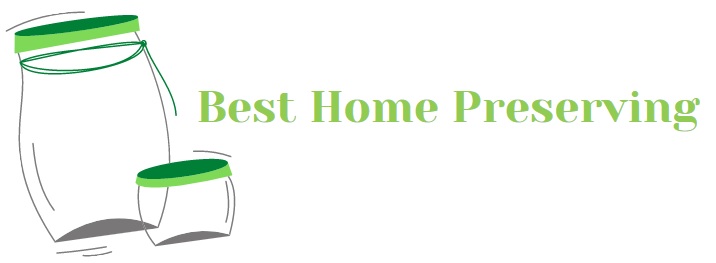

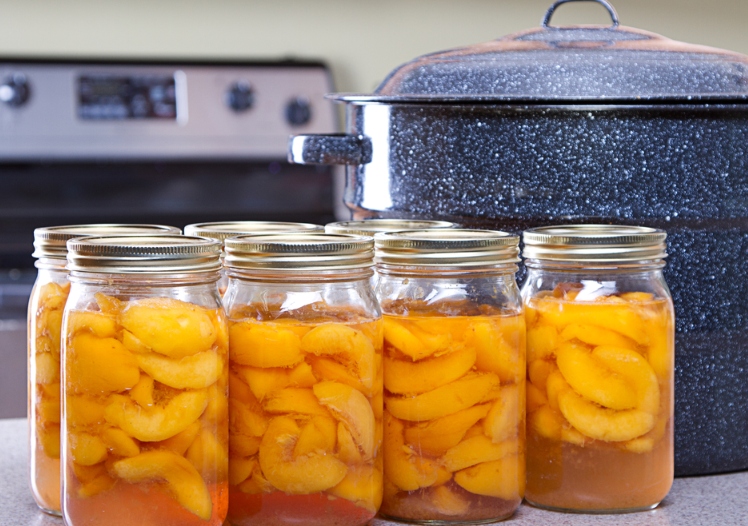
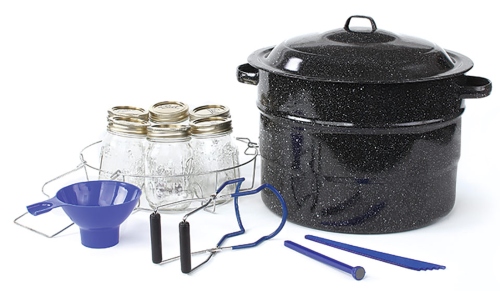
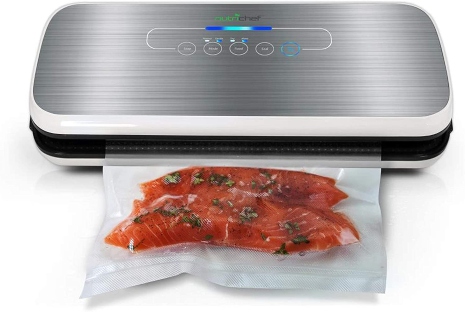
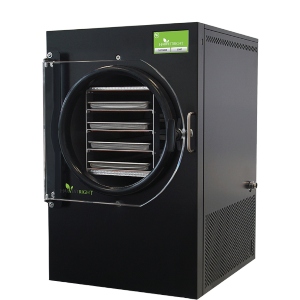
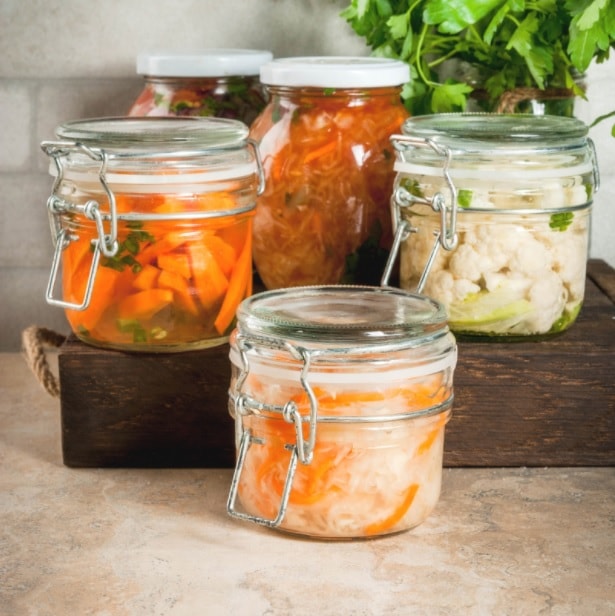
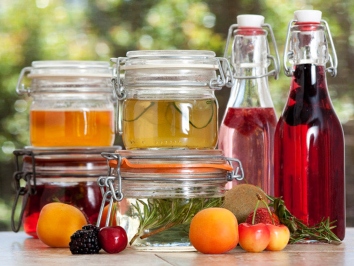
 Hi! I’m Sally-Anne!
Hi! I’m Sally-Anne!
Thanks so much for giving me personally an update on this topic on your site. Please be aware that if a new post becomes available or if perhaps any modifications occur to the current publication, I would consider reading a lot more and finding out how to make good use of those approaches you discuss. Thanks for your time and consideration of others by making this website available.
We appreciate your feedback and time taken to comment. Glad this helped.
I like the helpful information you provide in your articles. I will bookmark your weblog and check again here regularly. I am quite certain I will learn lots of new stuff right here! Best of luck for the next!
Good article, thank you. I just signed up to your rss feed!
Thanks for the feedback – Glad you are enjoying the articles
Please tell me that youre heading to keep this up! Its so superior and so important. I cant wait to read far more from you. I just feel like you know so very much and know how to make people listen to what you have to say. This blog is just as well cool to be missed. Good things, really. Please, PLEASE keep it up!
Thank you for your feedback, we really appreciate it.
Can I put some of this on my site if I include a link back to this webpage?
That would be great.
Just to let you know, this post seems a little bit weird from my android phone. Who knows perhaps its just my phone. Great article by the way.
Thanks for your feedback – we will look into why it is looking weird on your android phone.
I just added this website to my bookmarks. I enjoy reading your posts. Tyvm!
Thanks for your feedback. We have many more articles about food preserving and home preserving equipment coming.
After I open up your Rss feed it appears to be to be a lot of junk, is the issue on my side?
We will look into it. Thank you
Sounds good. This is a useful and informative article. Thanks a lot for sharing this information with us.
I get pleasure from, result in I found exactly what I was taking
a look for. You have ended my 4 day lengthy hunt! God Bless you man. Have a nice day.
Bye
Thanks for any other informative blog. Where else may I am getting that kind of information written in such an ideal means?
I’ve a venture that I am simply now working on, and I have been at the look out for such info.
Usefull facts made on your blog, most I agree with. Remember viewing a similar blog which I will try to post. Definately will bookmark ofcourse I await your next insightful blog post
Hi there! I know this is somewhat off topic but I was wondering which blog platform are you using for this website?
I’m getting sick and tired of WordPress because I’ve had problems with hackers
and I’m looking at alternatives for another platform.
I would be awesome if you could point me in the direction of a good
platform.
This site is built with WordPress.
Pretty! This has been an incredibly wonderful article.
Thank you for supplying this info.
Somebody essentially help to make seriously posts I’d state.
That is the very first time I frequented your website page and thus far?
I surprised with the research you made to create this actual put up extraordinary.
Excellent task!
Really appreciate you sharing this blog post.Really thank you!
Right here is the perfect webpage for anyone who would like to find out about this topic.
You realize a whole lot its almost tough to argue
with you (not that I really will need to…HaHa).
You certainly put a brand new spin on a topic which
has been written about for years. Great stuff, just excellent!
It’s enormous that you are getting ideas from this piece of
writing as well as from our discussion made here.
Took me time for you to check out all the notes, but I truly enjoyed the post. It proved to be in actual fact helpful to me and I’m sure to all of the commenters right here! It’s usually great when you can not just be informed, but additionally engaged! I’m certain you had enjoyable writing this write-up.
It’s nearly impossible to find knowledgeable people for this subject, however,
you sound like you know what you’re talking about!
Thanks
whoah this blog is fantastic i really like reading your articles.
Keep up the great work! You recognize, many individuals are hunting round for
this info, you can help them greatly.
I’m truly enjoying the design and layout of your site.
It’s a very easy on the eyes which makes it much more enjoyable for
me to come here and visit more often. Did you hire out
a developer to create your theme? Fantastic work!
Thank you for the feedback. We have built this site ourselves.
It’s nearly impossible to find well-informed people in this particular subject, but
you sound like you know what you’re talking about! Thanks
WOW just what I was looking for. Came here by searching for website
This design is steller! You definitely know how to keep a reader amused.
Between your wit and your videos, I was almost moved to start my own blog (well, almost…HaHa!) Great job.
I really loved what you had to say, and more than that, how you presented it.
Too cool!
Hello, I read your blogs on a regular basis. Your writing style is witty, keep it up!
This design is wicked! You definitely know how to keep a reader entertained.
Between your wit and your videos, I was almost moved to start my own blog (well, almost…HaHa!) Fantastic job.
I really loved what you had to say, and more than that, how you presented it.
Too cool!
Great post. I was checking continuously this blog and I’m impressed!
Extremely useful info specifically the last part 🙂 I care for such information much.
I was looking for this certain info for a long
time. Thank you and good luck.
I really like it when people get together and share thoughts.
Great blog, keep it up!
Thanks very nice blog!
Hello, I wish for to subscribe for this web site to take latest updates, so where can i do it
please assist.
Hi, we don’t have an email list at this stage but have one coming. Check in again to be able to subscribe.
Hello! Someone in my Myspace group shared this website with us so I came to look it over.
I’m definitely enjoying the information. I’m bookmarking and will
be tweeting this to my followers! Great blog and superb style and design.
Howdy! I could have sworn I’ve been to this blog before but
after browsing through many of the posts I realized it’s new to me.
Nonetheless, I’m definitely pleased I found it and
I’ll be book-marking it and checking back regularly!
I couldn’t resist commenting. Very well written!
Great post
Thanks so much
Thanks
Due to reading your blog, I decided to write my own. I had never been thinking about keeping a blog until I saw how fun yours was, i quickly was inspired!
Thank you for the post on your blog. Do you provide an RSS feed?
Hi Tomasz, we are looking into this. Thanks for commenting and the feedback
After read a couple of the posts on your website now, and I truly like your way of blogging. I tag it to my favorites site list and will be checking back soon. Please visit my web site too and let me know what you think.
Thank you for the post on your blog. Do you provide an RSS feed?
Weve been looking through your articles or blog posts on this site for at some time. This really is our very first comment. Your current blog is very helpful for me and it supplies top notch content material.
A big thank you for your article post. Much obliged.
Just want to say your blog is very good. I always like to hear something new about this because I have the similar blog in my Country on this subject so this help´s me a lot. I did a search on the issue and found a good number of blogs but nothing like this.Thanks for sharing so much in your blog.. Greets, Darijan
Some really superb content on this internet site, thanks for contribution.
After research a few of the weblog posts in your web site now, and I actually like your manner of blogging. I bookmarked it to my bookmark website list and will be checking again soon. Pls try my website as nicely and let me know what you think.
Great blog! I am loving it!! Will be back later to read some more. I am taking your feeds also
Hi, this an astonishing post man. Thnkx Unfortunately I am having problem with the rss feed. Unable to subscribe. So anyone having similar rss feed trouble? Anybody who knows kindly reply. TQ
Very interesting topic, regards for posting.